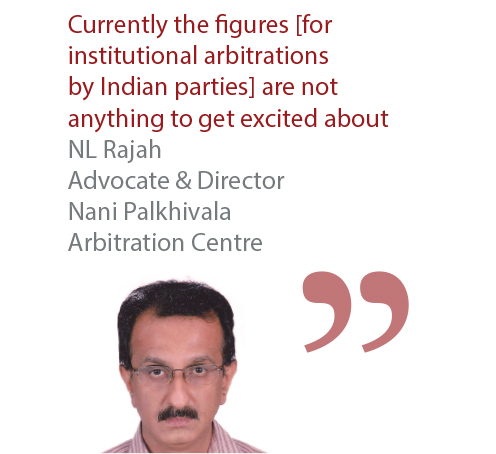Arbitration fails to prevail over litigation as parties to disputes continue to battle it out in India’s overburdened courts. Rebecca Abraham reports
In December 2003, the Law Commission of India produced a report titled “Proposals for constitution of hi-tech fast-track commercial divisions in high courts”. The commission had taken up the subject on its own initiative, convinced that investors “must be given a clear assurance” that high value commercial suits would be disposed of “normally within one year or at least within a maximum period of two years”.
While the commission’s proposals have remained on paper, companies have increasingly turned to commercial arbitration to bypass delays in the courts. But despite early hopes that arbitration would ease the pain felt by parties to disputes in India, in many respects it has failed to live up to its promise.
You must be a
subscribersubscribersubscribersubscriber
to read this content, please
subscribesubscribesubscribesubscribe
today.
For group subscribers, please click here to access.
Interested in group subscription? Please contact us.
你需要登录去解锁本文内容。欢迎注册账号。如果想阅读月刊所有文章,欢迎成为我们的订阅会员成为我们的订阅会员。
A better way to arbitrate?
As awareness of institutional arbitration continues to grow we take note of progress made by the various institutions
Parties looking to seat their arbitration at an institution outside India have several options. The most talked about continues to be the Singapore International Arbitration Centre (SIAC), which in 2012 saw new case filings go up by 25% to 235. Of the 49 cases that involved Indian parties, 34 were administered under SIAC’s arbitration rules and in the rest SIAC’s involvement was restricted to appointment of arbitrators.
The SIAC Court of Arbitration was established under SIAC’s new arbitration rules, which came into force on 1 April. In addition, the new rules usher in substantive changes to procedure such as increased powers to the registrar to determine whether an arbitration is deemed to have commenced and powers to tribunals to award post-award interest.
SIAC’s panel of approximately 350 arbitrators, which is publicly available on its website, was reconstituted earlier this year. In the process 10% of the previous panel was dropped.
In May, SIAC opened a representative office in Mumbai that is headed by SIAC’s head for South Asia, Vivekananda N. He reports that 2013 has been “a hugely successful year with an even larger number of cases including those involving Indian parties”.
A new option
Meanwhile, the Hong Kong International Arbitration Centre (HKIAC) continues to work at building awareness of the options available since HKIAC awards became enforceable in India. This happened in 2012, after China, which includes Hong Kong, was notified in the Indian government’s official gazette as a New York Convention jurisdiction.
Chiann Bao, the secretary general of the HKIAC, reports that since the gazetting, the HKIAC has received nine ad hoc arbitrations where at least one of the parties was Indian. Arbitrator appointments were made in six of the nine cases. Of the 293 cases handled by the HKIAC in 2012, only 68 were fully administered by the institution.
The number of arbitrations referred to the London Court of International Arbitration (LCIA) rose 18.3% to 265 in 2012. Disputes from Indian parties represented 4.25% of the cases, up from 1.5% in 2011.
LCIA India – the LCIA’s the first independent subsidiary – meanwhile reports that its caseload is “in single digits”. Ajay Thomas, registrar of LCIA India, declined to confirm reports that LCIA India made its maiden award in August. But he said that progress at LCIA India “was going according to plan”, with efforts continuing to try to dispel a continuing “lack of understanding” of institutional arbitration.
Fluctuating fortunes
The International Centre for Dispute Resolution (ICDR) – the international division of the American Arbitration Association – has received a record number of filings this year, reports Michael Lee, director of the Singapore-based Asia office of ICDR. The number stood at 1,086 on 22 November, up from 996 for all of 2012.
Cases involving at least one party from India totalled 40 in 2012, 33 in 2011 and 36 in 2010. ICDR hopes to have new rules in place in January 2014, with major changes in areas such as expedited proceedings, joinder and consolidation, limited document exchange, and a code of ethics for arbitrators and counsel.
Arbitrations at the International Court of Arbitration of the International Chamber of Commerce in Paris, meanwhile, slipped to 759 in 2012 from 796 to 2011. Indian parties were involved in 3.98% of the arbitrations in 2012.
While these numbers suggest that Indian parties are heading beyond India’s border to arbitrate, the volumes continue to be low.
“There is a lot of prospect but currently the figures are not anything to get excited about,” says NL Rajah, a director of the Nani Palkhivala Arbitration Centre. Considering the vast number of commercial cases that are waiting to be heard in courts across India, it’s easy to agree.



























